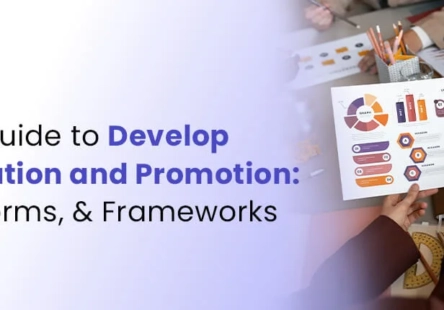What’s the dream of every B2B marketer?
It’s more leads, more visibility, and more results—without needing more budget.
Good quality content can help you get there. Can’t it? But here’s the thing: despite having the most insightful guide in your industry, you still struggle to make an impact.
Your high-quality content will only move the needle when it reaches the right audience. That’s where content syndication steps in. It helps you put your message in front of decision-makers you wouldn’t otherwise reach and delivers leads that are actually worth your sales team’s time.
What makes content syndication work? Read our blog.
Why Content Syndication Still Works (and Why It Often Fails)
The B2B space is crowded with blogs, whitepapers, webinars. Everyone’s publishing them. But not everyone’s getting seen.
According to Gartner, 83% of B2B buyers do their research independently before speaking to a vendor.
If your content isn’t showing up where they’re looking, you’re out of the game—while your competitors are already in conversation with the prospect, you’re after.
Many companies invest all their resources in creating great content but ignore the publishing side. Often, good content ends up on the wrong platforms, with vague targeting and no follow-ups. This results in a bloated list full of unqualified names.
So, what’s the right approach?
Don’t syndicate everything. Be selective. Choose evergreen, high-performing content. Match it to the right platform and audience. Then set up nurture paths so a download leads to a conversation, not just a contact.
How Content Syndication Done Right Looks Like:
- You are visible among decision-makers.
- You drive high-intent traffic to your website.
- You generate leads that fit your ICP.
- It supports SEO with quality backlinks.
All in all, you don’t need new content—you need a smarter distribution strategy.
How Top B2B Brands Are Using Syndication Strategically
Adobe doesn’t just syndicate content—they segment it. Their eBooks are promoted via TechTarget and IDG, platforms frequented by marketers and IT buyers. But they don’t stop at visibility. Each asset is mapped to a funnel stage, ensuring leads are sales-ready by the time they hit the pipeline.
Salesforce knows trust comes before opt-ins. That’s why they lead with value. Instead of gating everything, they offer upfront insights using customer stories and data-backed reports to build credibility. Their syndication model earns attention first. Then captures it with contextual CTAs.
HubSpot gets their audience to love snackable formats. They repurpose blogs into infographics and quick guides, syndicating them across content hubs and LinkedIn feeds. These top-of-funnel assets don’t just inform, they spark engagement with tools like calculators and templates that speak to user pain points.
B2B Content Syndication: A Real Case Study
A cybersecurity company created a valuable whitepaper on supply chain vulnerabilities. But it was nowhere to be found in emails or social posts. The real challenge was in reaching the right personas in a niche industry with high resistance.
So, they partnered with a syndication vendor specializing in manufacturing CIOs. The asset was featured in an industry newsletter and reposted on two authority blogs. The results:
- 187 downloads with verified business emails
- 62 matched their Ideal Customer Profile
- 17 qualified meetings booked
No new content generated, just better placement. This is where many teams fail: pushing great content onto general channels without even matching it to the buyer’s ecosystem.
In a nutshell, success isn’t about publishing more. It’s about publishing smarter by aligning every asset to intent, context, and channel.
How to Implement Content Syndication for Your B2B Business
Campaigns fired without a clear aim? They flop. Too often, teams toss a whitepaper onto a syndication network, cross their fingers, and wait. But without defining goals, channels, or audience fit results fall flat.
Start with what works.
Pull up your analytics. What content has driven the most downloads or held user attention the longest? Syndicate that.
Know where your audience hangs out.
CTOs may read on TechTarget. Marketers may prefer LinkedIn Pulse. Use data to find your buyers. Don’t guess.
Set the right goal.
Do you want awareness? Lead capture? Pipeline influence? Your platform, asset, and CTA should match that goal.
What’s the best approach?
Use gated content for lead gen, and ungated content for brand visibility. Then use retargeting to stitch them together.
Tools and Platforms to Help You Do It Right
Another place where marketers get stuck is platform paralysis. More often, they pick “big names” without confirming audience alignment or they test too many at once without clear benchmarks.
Infographics.

You need to filter by intent signals, geography, and job function. A CFO in finance cares about cost control. A CTO wants to see integration clarity. Segment accordingly.
Measuring What Matters
Marketers often look at content syndication through vanity metrics like impressions, clicks, or downloads. These metrics feel like your efforts are driving business. But in reality, they’re not.
Instead, focus on:
- Engagement: Are people staying on the page or bouncing?
- Conversion: Are they filling out the form or just viewing?
- ICP fit: Are the leads from your target industries and roles?
- Pipeline velocity: How fast are these leads moving through stages?
To trace the lead’s journey, use UTM parameters and CRM tags.
According to HubSpot (2024), teams that track revenue-linked metrics report 42% higher campaign ROI than those using surface metrics alone.
Essentially, if you’re not tying syndication to revenue, you’re simply guessing—not optimizing.
In Conclusion.
Content syndication isn’t about spreading content everywhere. It’s about placing the right content where your buyers are—and giving them a reason to care.
When done right, it expands reach, builds trust, and fills your pipeline with leads that want what you offer.
If you want to scale without recreating everything from scratch, bet on content syndication. It’s not just “good to have,” it’s a competitive advantage.
Because the real power of content isn’t in publishing it. It’s in making sure the right people find it.
Frequently Asked Questions (FAQs)
What is content syndication in B2B marketing?
B2B content syndication is the process of republishing your valuable content-such as whitepapers, blogs, and eBooks-on third-party websites to reach a broader, targeted audience and generate qualified leads.
Why is content syndication important for B2B companies?
It helps extend your content’s reach to decision-makers, improves lead quality, supports SEO through backlinks, and drives high-intent traffic—all without creating new content.
What types of content are best for syndication?
Evergreen assets like whitepapers, case studies, industry reports, how-to guides, and infographics perform best. These offer value across multiple funnel stages and work well on both gated and ungated platforms.
How do top companies use content syndication effectively?
Brands like Adobe, Salesforce, and HubSpot align their syndicated content to the buyer’s journey, segment by audience type, and use strategic CTAs to turn visibility into engagement and leads.
How do I choose the right content syndication platform?
Start by identifying where your ideal buyers spend time. For example, TechTarget is great for IT leaders, while LinkedIn Pulse works well for marketers. Align the platform with your content goals and audience fit.
Does content syndication help with SEO?
Yes, when syndicated correctly with proper attribution, it can generate backlinks and referral traffic that strengthen domain authority and improve search rankings.
What are common mistakes in content syndication?
Syndicating without targeting, ignoring intent signals, using broad channels, not nurturing leads post-download, and measuring only surface-level metrics like impressions or clicks.
How do you measure the success of content syndication?
Go beyond vanity metrics. Track engagement rates, form conversions, ICP fit, and how quickly leads move through your pipeline. Use UTM links and CRM tracking to measure ROI.




